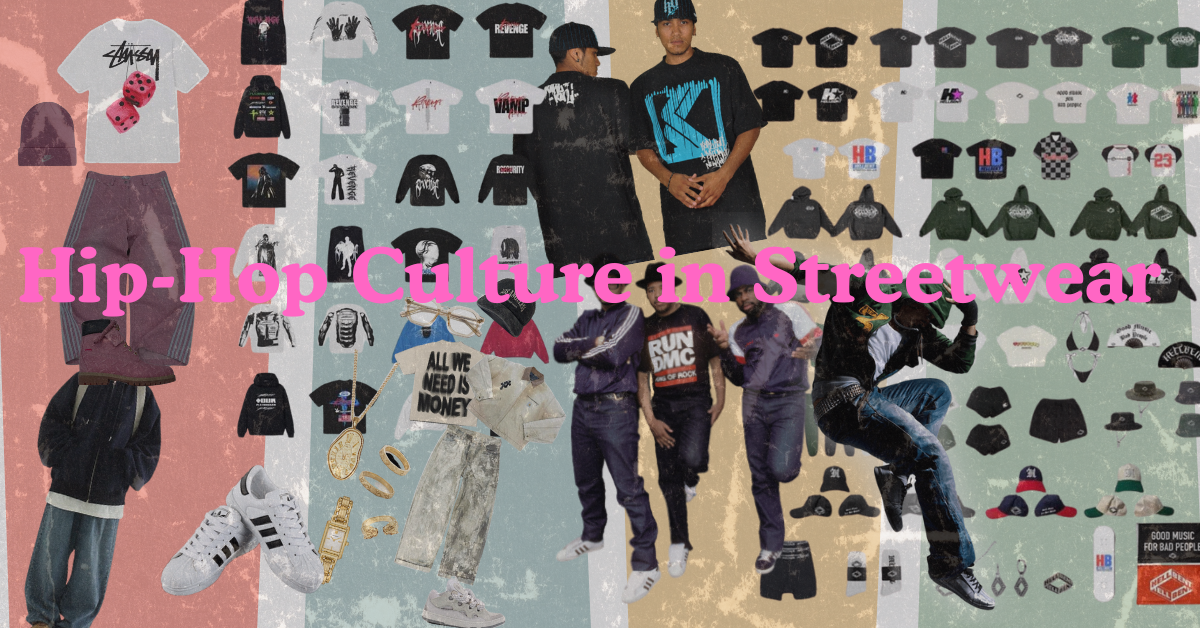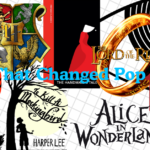I still remember the first time I saw a Run-D.M.C. music video. They weren’t just rapping; they were making a statement—with their Adidas tracksuits, gold chains, and iconic shell-toe sneakers. As a teenager growing up in the digital age, I didn’t need to know every lyric to understand the vibe. The style spoke louder than words, telling a story of confidence, resilience, and culture. That moment was more than a fashion revelation—it was my first glimpse into a movement that would redefine global fashion forever.
Hip-hop is more than music; it’s a cultural powerhouse that has shaped art, language, and, most prominently, fashion. The connection between hip-hop and streetwear isn’t just incidental—it’s symbiotic. From the baggy pants and oversized hoodies of the ‘90s to today’s high-fashion collaborations, hip-hop has always defined what’s cool and continues to inspire how we express ourselves through clothing.
How Hip-Hop Influenced Streetwear
In its early days, hip-hop rejected the mainstream, carving out a space for individuality and self-expression. Artists like LL Cool J, Tupac Shakur, and Public Enemy used fashion as an extension of their music—a visual manifesto of their identity and rebellion. Baggy clothes symbolized freedom, while gold chains and sneakers became emblems of success and aspiration.
Let’s break down the key ways hip-hop has left its mark on streetwear:
1. Sneakers as Status Symbols
– Run-D.M.C. didn’t just wear Adidas; they turned them into a cultural phenomenon. Their song “My Adidas” wasn’t just a hit—it was an anthem for self-expression, pushing sneakers from gym floors to the streets.
– Kanye West’s Yeezys turned sneakers into high-fashion collectibles, proving that footwear could blend hip-hop culture with luxury.
– Michael Jordan, though from the basketball world, became a hip-hop icon, with Air Jordans becoming a staple in the wardrobes of rappers and fans alike.
2. Bold Branding
– Brands like FUBU (For Us, By Us) emerged directly from hip-hop culture, providing fashion for the people who were creating and living this movement.
– Supreme’s collaborations with artists like Nas and Tupac reflect how streetwear and hip-hop share the same unapologetic ethos.
– A$AP Rocky, Tyler, The Creator, and Pharrell have popularized brands like GOLF and Billionaire Boys Club, merging music with entrepreneurial fashion ventures.
3. Cultural Storytelling Through Fashion
– Tupac’s bandanas, Biggie’s Coogi sweaters, and Missy Elliott’s oversized metallic suits weren’t just outfits; they were cultural statements.
– Streetwear isn’t just clothing; it’s a canvas for storytelling. Every piece speaks to struggle, victory, and community—a reflection of hip-hop’s powerful voice.
Why This Matters Today
The influence of hip-hop on streetwear has transcended boundaries, evolving into a global phenomenon. What started as a form of urban self-expression is now a billion-dollar industry. Brands like Off-White, Fear of God, and A Bathing Ape draw heavily from hip-hop aesthetics, while luxury houses like Louis Vuitton and Gucci collaborate with hip-hop artists to tap into the energy and authenticity of the culture.
Even today, Travis Scott’s partnership with Nike, Cardi B’s Reebok collection, and Kendrick Lamar’s collaborations with Converse prove that hip-hop and fashion remain inseparable.
3. Actionable Insights
How to Incorporate Hip-Hop Style into Your Wardrobe
Take a moment to reflect on what hip-hop means to you. Is it the beats, the lyrics, or the visuals? Here are a few ways to translate that inspiration into your personal style:
– Sneaker Power: Invest in bold sneakers that make a statement—whether it’s classic Adidas Superstars or the latest Jordan releases.
– Oversized Confidence: Experiment with oversized fits, like baggy hoodies or wide-leg pants, to channel the carefree, rebellious spirit of the culture.
– Gold Accents: Add subtle gold accessories—a chain, a bracelet, or even gold-embossed graphics—to evoke hip-hop’s timeless elegance.
– Graphic Tees: Choose tees with prints that pay homage to hip-hop legends or iconic album art, blending nostalgia with modern streetwear vibes.
How InkspiredBD Brings Hip-Hop to Streetwear
At InkspiredBD, we embrace the boldness, creativity, and authenticity of hip-hop culture. Our designs draw from the spirit of the streets and the rhythm of the beats, celebrating hip-hop’s enduring legacy. From graphic tees inspired by iconic album covers to hoodies that channel urban vibes, we craft pieces that empower you to wear your story with pride.
A Call to Action
The next time you listen to your favorite hip-hop track, think about the fashion it represents. Look beyond the beats and lyrics to see the cultural movement it inspires. Then, wear it—not just as a style, but as a statement of who you are.
At InkspiredBD, we believe streetwear is more than clothing; it’s a reflection of the stories, struggles, and victories that make you unique. Let’s continue to honor hip-hop’s legacy by wearing it with pride and keeping its spirit alive.
This enriched version integrates more examples and actionable insights, making the blog engaging, relatable, and empowering for readers.





